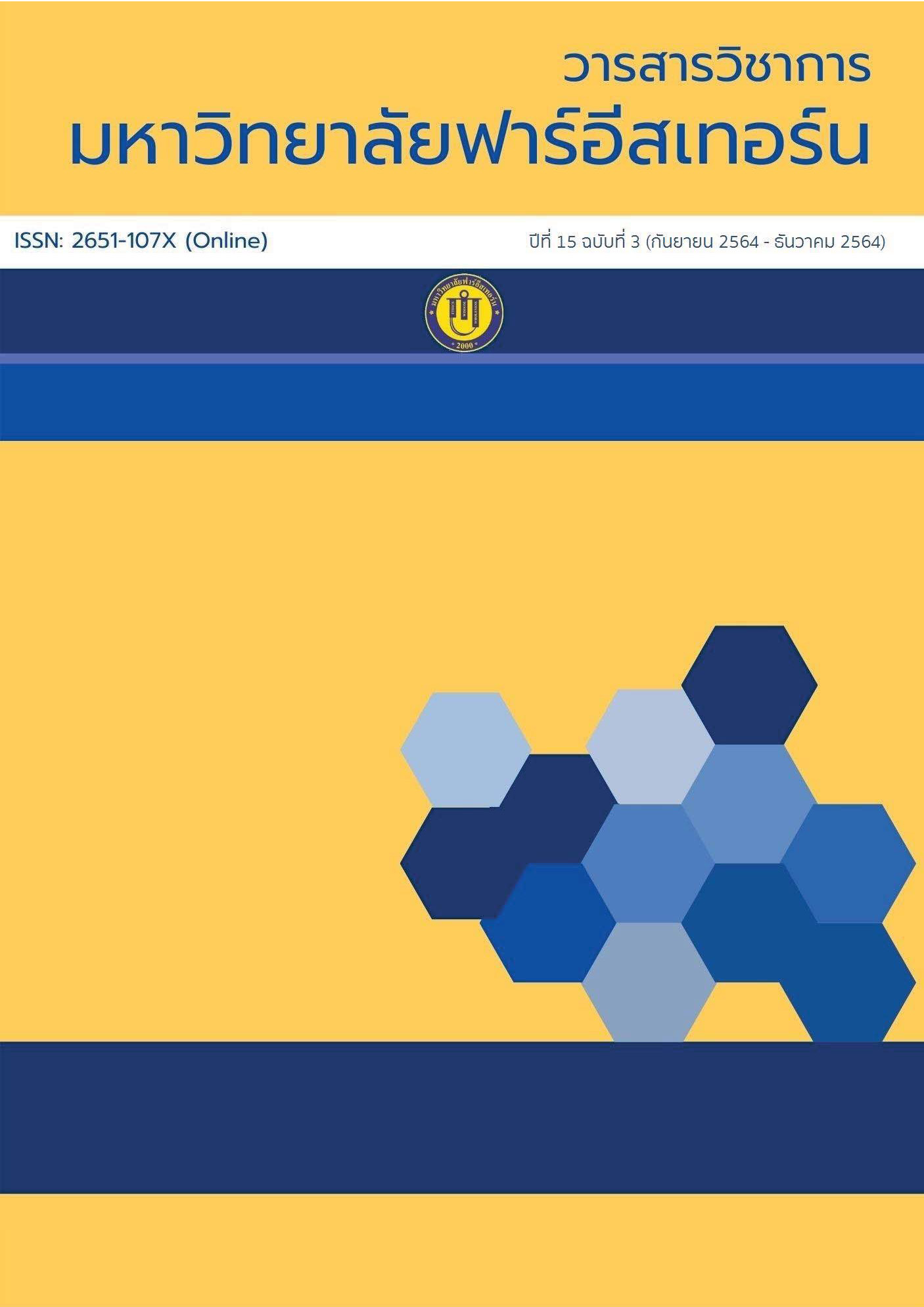The Guidelines for Teaching and Learning in Krabi Krabong to Enhance Awareness of the Conservation of Thai Wisdom Sports
Main Article Content
Abstract
The purpose of this research was to present guidelines for teaching and learning Krabi Krabong sport in order to raise awareness about conserving the wisdom of a traditional Thai martial art. The samples were obtained by selective selection with expertise in Krabi Krabong and physical education teaching, 10 people. The method of data collection was done by draft the guidelines for teaching and learning in Krabi Krabong to enhance awareness of the conservation of Thai wisdom sports by collect information through group discussions. Analyze data by interpreting inductive conclusions. Research results are as follows: There are 10 guidelines for teaching and learning Krabi Krabong to raise awareness about conserving the wisdom of a traditional Thai martial art as follows: 1) Developing and refining concepts 2) Restoration of Krabi Krabong 3) Elevating local masters of Krabi Krabong 4) Promotion of Krabi Krabong wisdom and heritage 5) Coordinating cooperation 6) Management of learning 7) Methods of transferring knowledge/skills in Krabi Krabong 8) Promoting activities involving Krabi Krabong 9) Publicizing and sharing martial skills in Krabi Krabong and 10) Development and research of Krabi Krabong.
Article Details
1. Any views and comments in the Journal of Social Innovation and Lifelong Learning are the authors’ views. The editorial staff have not to agree with those views and it is not considered as the editorial’s responsibility.
2. The responsibility of content and draft check of each article belongs to each author. In case, there is any lawsuit about copyright infringement. It is considered as the authors’ sole responsibility.
3. The article copyright belonging to the authors and The Far Eastern University are copyrighted legally. Republication must be received direct permission from the authors and The Far Eastern University in written form.
References
Ajpura, H. (2001). Relationship between personal factors, leadership, lifestyle and the self-learning ability and the public consciousness of nursing students. (Master’s thesis, Master of Nursing, Chulalongkorn University). (Audio excursion). [In Thai]
Gagne’, R. M. (1987). Instructional technology: Foundation. Hillsdale: Lawrence Erlbaum Associated.
Hills, P. J. A. (1982). Dictionary of Education. London: Routledge & Kegan Payi.
Hough, John B. & Duncan, James K. (1970). Teaching description and analysis. Addison-Wesley.
Kasemnet, L. et al. (2004). A model for developing elementary school students to have a public mind: a long-term study. Documents for the academic conference on the 49th anniversary of the establishment of the Institute of Behavioral Sciences. Bangkok: Srinakharinwirot University. [In Thai]
Koedkaew, F. (1984). Krabi KrabongComplete Edition. Bangkok: Odeonstore. [In Thai]
Kongkaew, P. (2016). The Development Model of Physical Education Subjects Learning Management of Chiang Mai University in the 21st Century. Chiang Mai: Faculty of Education, Chiang Mai University. [In Thai]
Marquardt, M. J. (1999). Action learning in action: Transforming problems and people for world-classorganization learning. Palo Alto: Davies-Black.
Ministry of Culture. (2016). Draft a 20-year strategic direction framework on culture according to the 20-year national strategic direction framework. n.p. Ministry of Culture.
Moore, D. S. (1995). The Basic Practice of Statistics. New York: W. H. Freeman and Co.
Office of the Education Council, Ministry of Education. (2017). The National Scheme of Education BE 2560-2579 (2017-2036). Education Council Secretariat Ministry of Education. Bangkok: SweetChili Graphic Co., Ltd. [In Thai]
Office of the National Economic and Social Development Board. (2016). The 12th National Economic and Social Development Plan (2017–2021). Bangkok: Office of the National Economic and Social Development Board Prime Minister's Office.
Phothisita, C. et al. (1997). Report of a research study entitled Public Consciousness: Study Bangkok. Nakhon Pathom: Institute for Population and Social Research Mahidol University. [In Thai]
Pinyoanantapong, S. (2001). Research report titled Cultivating early childhood children to love the environment through homework exercises and practical exercises. Bangkok: Early Childhood Education Branch Department of Curriculum and Instruction Faculty of Education Srinakharinwirot University. [In Thai]
Rakitja. (2016). Promote and preserve cultural intangible heritage: 2016. Enactment: Volume 133 Chapter 19.
Raksiri, P. & Ratanarodjanakul, P. (2017). Expectations, conditions and needs are necessary for teaching and learning. Courses P32102 Physical Education (Krabi) of upper secondary school students Bodindecha (Sing Singhaseni) School 2. Academic Journal of Buriram Rajabhat University. 9(1), 93-111. [In Thai]
Savery, J.R., & Duffy, T.M. (1996). Problem-based learning: An instructional model and constructivistframework. In B.G.Wilson (Ed.), Constructivist learning environments: Case studies in instructionaldesign (pp. 135-148). Englewood Cliffs, NJ: Prentice-Hall.
Singhapol, S. (1999). It must be taught to create a new consciousness. SimaChan. 13(27), 15–16. [In Thai]
Thongtumluing, K., Polsiri, A. & Rattanasiri, M. (2018). Conservation and Development of the Thai Children’s Folk Play Wisdoms in the North. Veridian E-Journal, Silpakorn University. 11(1), 1320-1336. [In Thai]

